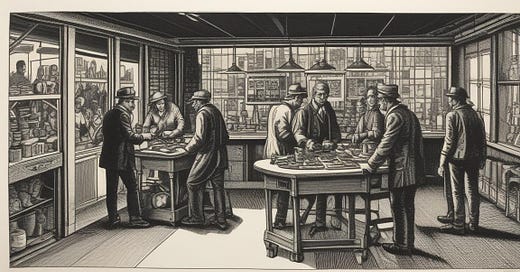You have to buy products and services as well. When you're reviewing the market and finding potential future customers, do you ever consider who your vendors are selling to? Maybe they can open the door for you to new markets. Maybe you can provide semi-finished goods to a bigger manufacturing shop. Or perhaps, you can find a niche product that no one likes making and become the master of that. Or, at the very least, you might find great industry connections that help fill your sales pipeline.
Who are Your Vendors
A good place to start in your sales process is to simply understand your vendors:
What products and services are you building?
Are these products and services that your competition buys as well?
What other industries or markets does this vendor serve?
Do this research before your next meeting with your vendor, and then ask to be part of that conversation. Offer to grab coffee or lunch with the vendor after your meeting. Talk through what they’re seeing in the market. What industries are strong right now? Who else buys these products or services? They might be a little cagey about sharing specifics at first, so treat it like any other relationship—build trust over time. Once you’ve established a good rapport, they may help you see where they’re succeeding and where they can assist you in finding new customers.
Getting to Warm Leads
Now that you understand where your vendors operate, think about where you want to go:
Are there customers they sell to that you want to work with directly?
Are there problems they see in the market that you can fix?
Are there new industries they work in that you want to explore?
Once you’ve reviewed these questions, develop a game plan. Research those new companies, industries, or challenges. Have examples ready that show how you’ve solved similar problems. This groundwork will ensure you’re prepared when an opportunity presents itself. It’s about being ready when the door opens.
The Ask
You’ve developed a strategy, defined your product or service, and started prospecting potential clients. You've also continued building your relationship with your vendor. All the pieces are in place. Now comes the ask.
In your next meeting with the vendor, mention that you’ve identified an opportunity—maybe with a specific customer or a problem you can solve. Pitch your solution and ask for feedback: *“Is this something you think would be valuable?”* or *“Is there anything you would do differently?”* By involving them in the solution, they become part of the problem-solving process.
Then, ask if they see any industries or customers who might benefit from your solution. If they mention companies already on your list, great—you’re on the right track. Let them know what you’ve done to make headway and ask if they can help with an introduction. Even if they don’t share all their contacts immediately, this process helps build trust. Keep adding value to the relationship, and remember: it’s a two-way street.
Action Step
Review your vendor list. Pick three vendors to research and see where they might be able to help you get in the door. Set up a meeting with each one, and approach one vendor per week. Keep moving forward while continuing to develop relationships with your customers.
Recommended Reading:
"Leveraging Supplier Relationships for Business Growth" - This article dives into how businesses can work more collaboratively with suppliers to unlock new opportunities.
"How Vendors Can Help You Grow Your Business" - A detailed guide on how understanding and leveraging vendor networks can expand your business.
"Using Vendor Partnerships to Drive Market Expansion" - Learn more about utilizing vendor partnerships to expand into new industries and markets.
"How to Build Long-Term Supplier Relationships" - This article explores the importance of long-term supplier relationships and how they can open new business doors.
"Creating Value Through Supplier Networks" - Understand the value suppliers can bring to your business beyond just materials.




